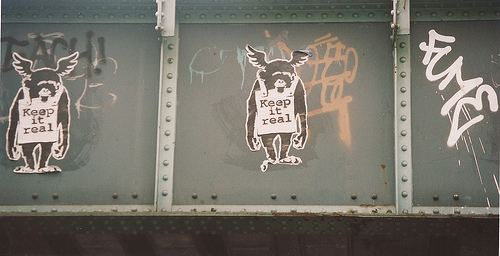The Real Fake
Last week, we described how the famed U.K. street artist Banksy had set up a stand in New York’s Central Park selling real Banksy pieces – stenciled figures spray-painted on canvas – for $60. The art was worth a lot more than that, yet almost no one bought any. We asked how that could be – and got a lot of great reader responses in the comments. Thanks!
It turns out that there’s a second part to this story. One week after Banksy tried and failed to sell his art, a bunch of unrelated artists set up a stand selling fake Banksys for $60. The pieces were exact replicas of the ones Banksy had tried to sell in his stand. But this time the artists told shoppers very clearly that the pieces were fake. And yet they sold out their stock in an hour.
All of this brings up some really interesting questions about the market for art. When people buy art, what exactly are they buying? People strolling through Central Park might have thought that Banksy’s real art was fake – for anyone in the know, the $60 price (real Banksys sell for many thousands) and the setting (a stand in Central Park) sent that signal. Others may have simply thought they were cheap stencils, overpriced at $60. And so the pieces went unsold, even though they look exactly like the Banksy pieces for which people gladly pay many thousands – because they actually are those Banksy pieces. Ok, but then why were people willing to buy the fakes? We think that people were buying the fake Banksys as art. Wait . . . what? Well, Banksy’s experiment got a lot of press in New York, and so when people encountered the fake Banksys they understood them as part of a narrative that Banksy had constructed about how what we identify as “art” – e.g., the Banksy hanging in the swanky New York or London gallery – is really just about hype. The same Banksy piece displayed on a stand in Central Park and priced at $60 is no longer “art.” It’s a fake. It’s junk for the tourists.
The artists selling the fake Banksys were responding to this narrative. “Look,” they said, “these are fake!” Which, in a sense, made them authentic. And valuable, in two ways. First, as honest and well-executed replicas of art for which people will (in the right context) pay a lot. Second, and more importantly, as part of Banksy’s conceptual art project about the meaning of art. The fake Banksys were not actually spray-painted by Banksy. But, in a sense they were created by him. So are they “Banksys?”


Comments